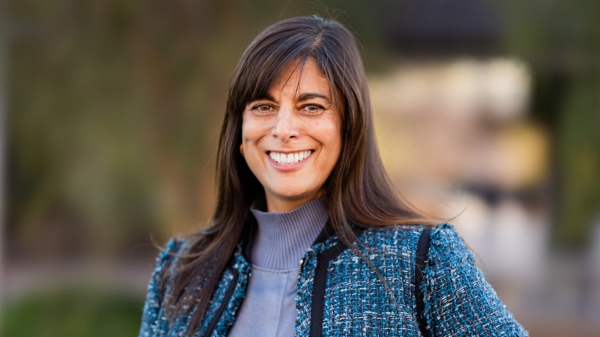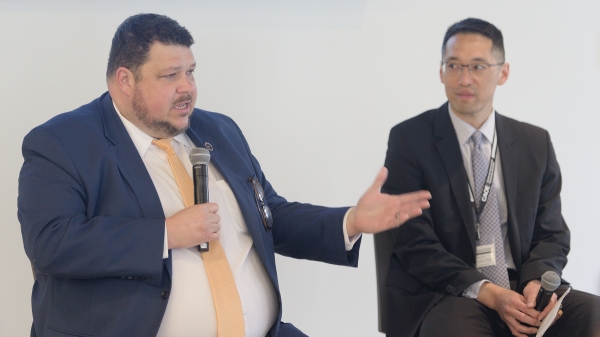The cybersecurity workforce gap continues to grow, with hundreds of thousands of jobs left vacant. What can we do?
This year alone, roughly 465,000 jobs (according to Cyberseek) remain unfilled in cybersecurity across the United States. At the same time, ransomware and other dangers continue to threaten organizations and individuals. The recent Colonial Pipeline hack and other ransomware attacks on government and private industry highlight the urgent need for more cybersecurity professionals.
This is why the National Security Agency (NSA) and National Science Foundation (NSF) have come together to bring grant-funded GenCyber cybersecurity camps to high schoolers across the country.
GenCyber camps bring together students from grades eight to 12 for a weeklong cyber exploration. Topics include network security, cyber awareness and information security. New College of Interdisciplinary Arts and Science and the Cybersecurity Education Consortium, a unit of the Global Security Initiative, collaborated to host the first GenCyber camp at ASU through grant funding from the NSF and NSA.
The goal of the grant funding is to "provide as many opportunities as possible for students to be exposed to this new and evolving area so critical to our nation's security,” said Diane M. Janosek, training director of the NSA's Central Security Service.
A competitive pool of student applicants applied for the free, weeklong experience. Funds were specifically allocated to provide underrepresented students opportunities to attend the camp as there is an increased need to diversify the field of cybersecurity.
“(The camp helped to) expand my knowledge and understand what cybersecurity is without having to commit to it like you would with a degree,” said high school student Osmond Chong, a camp attendee.
Cyber.org's cybersecurity curriculum for high school students was the basis for this year's GenCyber camp. Students implemented the content using the U.S. Cyber range, a virtual, machine-based learning environment that allows students to run programs, simulate malware and build cyber know-how. Both tie together to bring high schoolers an immersive experience in cyber.
Chuck Gardner, director of curriculum at Cyber.org, explained how students discover issues and threats in the field of cybersecurity: “It was a wonderful opportunity to see ‘aha’ moments develop for high school students as they saw passwords get cracked and realized that many pictures they see on the internet can contain hidden messages using encryption methods, such as steganography.”
Throughout the week, campers learned from a variety of presenters, including industry professionals, ASU faculty and cyber employees from the Arizona Department of Homeland Security. “We keep learning so that if there is a new attack, we can be better prepared”, Feng Wang, professor in the School of Mathematical and Natural Sciences, explained to students. Wang stood alongside a number of speakers who helped students appreciate the nuanced perspectives of working in the cybersecurity field.
Another component of the camp is to destigmatize careers in cyber.
“Hacker, in its original meaning, is someone who applied ingenuity to create a clever result, called a hack. In our minds, in our popular culture, we think of a hacker as someone in a hoodie hunched over," said Adam Doupé, associate professor in the School of Computing, Informatics, and Decision Systems Engineering. “Hackers look like you, me and everyone. To be a hacker is (to be) someone who understands how to do something.”
Through the GenCyber program and the efforts of Arizona State University, Cyber.org and others, including the Center for the Future of Arizona, there is a strong mission underway to locate and educate cyber talent right now, in high school classrooms across the state of Arizona.
Written by Javier Carlos; top photo from Shutterstock
More Science and technology

The science behind chronic stress
Stress comes in many shapes and sizes. There’s the everyday stress of preparing for a final exam or being stuck in traffic. And the more significant stress of losing a friend, family member,…

ASU planetary scientist to be inducted into the National Academy of Sciences
The National Academy of Sciences is inducting School of Earth and Space Exploration Director Meenakshi Wadhwa into the 2023 class of new members for her pioneering work in planetary sciences and…

Unlocking the potential of AI for homeland security
“Can we do what we're doing now cheaper, more efficiently, more effectively?” Adam Cox, director in the Office of Strategy and Policy at the Department of Homeland Security Science and Technology…
